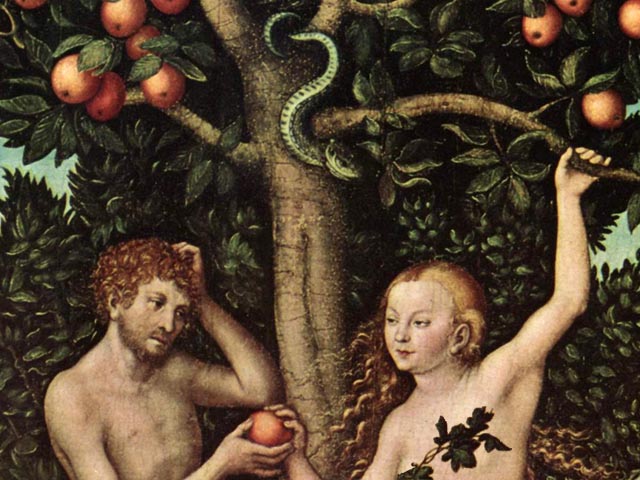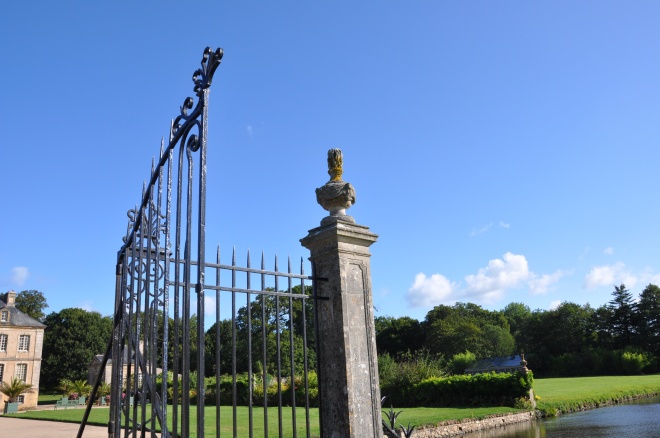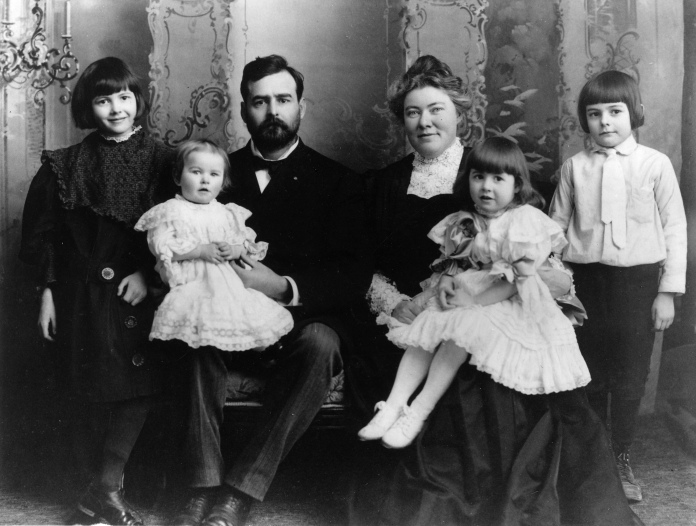Distinctly Emasculated

On Hemingway, Fitzgerald, and the sexual anxiety of the Lost Generation for The Paris Review
 History tends to compare Ernest Hemingway and F. Scott Fitzgerald—and why not? As contemporaries and rivals, the two make natural foils for each other. Hemingway, we’re told, epitomizes a certain archetypal masculinity; he presented himself as a hunter, a boxer, a war veteran, and a ladies’ man; accordingly, he wrote in a spare, economical style, mostly about war, solitude, and adventure. Fitzgerald, on the other hand, we know as a social striver, someone who prided himself on his budding elitism and his (incomplete) Princeton education, who was known to have his pocket square and his hair-part always just right. He wrote about socioeconomic status in prose that was, at least next to Hemingway’s, often lyrical and adorned, and most would readily agree that he’s the more effeminate of the two. But the sexual identities of these men, formed by their peculiar childhoods and the Lost Generation artists they surrounded themselves with, weren’t as self-evident as many modern readers might think.
History tends to compare Ernest Hemingway and F. Scott Fitzgerald—and why not? As contemporaries and rivals, the two make natural foils for each other. Hemingway, we’re told, epitomizes a certain archetypal masculinity; he presented himself as a hunter, a boxer, a war veteran, and a ladies’ man; accordingly, he wrote in a spare, economical style, mostly about war, solitude, and adventure. Fitzgerald, on the other hand, we know as a social striver, someone who prided himself on his budding elitism and his (incomplete) Princeton education, who was known to have his pocket square and his hair-part always just right. He wrote about socioeconomic status in prose that was, at least next to Hemingway’s, often lyrical and adorned, and most would readily agree that he’s the more effeminate of the two. But the sexual identities of these men, formed by their peculiar childhoods and the Lost Generation artists they surrounded themselves with, weren’t as self-evident as many modern readers might think.
There’s a classic story of the homosexual tensions bubbling just beneath the surface between Hemingway and Fitzgerald. It takes place in the men’s room at Michaud’s, at the time an upscale brasserie in Paris. As Hemingway claims in A Moveable Feast—and claims is just the word, because his own sexual insecurities tended to manifest in an unfair emasculation of Fitzgerald—Fitzgerald told him:
“Zelda said that the way I was built I could never make any woman happy and that was what upset her originally. She said it was a matter of measurements. I have never felt the same since she said that and I have to know truly.”
“Come out to the office,” I said.
“Where is the office?”
“Le water,” I said.
We came back into the room and sat down at the table.
“You’re perfectly fine,” I said. “You are O.K. There’s nothing wrong with you. You look at yourself from above and you look foreshortened. Go over to the Louvre and look at the people in the statues and then go home and look at yourself in the mirror in profile.
“Those statues may not be accurate.”
“They are pretty good. Most people would settle for them.”
Laying aside the inherent humor in using statues at the Louvre to measure one’s manhood, Hemingway’s claim that he took a look at Fitzgerald’s member in le water, the men’s room, is treated with an odd informality given the intimacy of the act. It also seems to undermine the hyper-hetero, hypermasculine image Hemingway put forth on the page—it’s a quiet revelation. According to those who knew him, Hemingway’s bull fighting and boxing, to say nothing of his string of submissive wives, didn’t add up to the image of manliness he’d attempted to create for himself.
Kenneth S. Lynn’s biography of Hemingway quotes Lady Emerald Cunard, an American-born socialite who spent most of her life in London and who, when she first met Hemingway, told the literary critic Cyril Connolly, “I was startled … Not a bit what I expected. You may think it bizarre of me but he struck me as androgynous … It is not the mot juste, perhaps. But that’s how he struck me. Distinctly emasculated.” Zelda Fitzgerald, who was, it must be said, sometimes prone to hyperbole, still told Scott one evening that Hemingway was little more than “a pansy with hair on his chest,” per Nancy Milford’s biography of Zelda. So strong was Hemingway’s masculinity that he even claimed to lust after Gertrude Stein, who was generally precluded from male sexual fantasies. According to W. G. Rogers’s When This You See Remember Me: Gertrude Stein in Person, Hemingway said, “She used to talk to me about homosexuality and how it was fine in and for women and no good in men and I used to listen and learn and I always wanted to fuck her and she knew it and it was a good healthy feeling and made more sense than some of the talk.”
But the most fascinating example of Hemingway’s fluid sexuality came in his second posthumously published novel, The Garden of Eden, which he had worked on since 1946 but did not see publication until 1986, nearly twenty-five years after he had killed himself. The novel deals with what Hemingway’s biographer James Mellow calls “the ideas of sexual transference.” It follows a newly married couple, David and Catherine Bourne, honeymooning on the French Riviera, where they meet a woman called Marita with whom they both fall in love. Catherine convinces her husband to dye his hair the same color as hers, so that, as Mellow writes, “they are twins, summer-tanned and androgynous.” The novel shows a subtle interest in lesbianism and a more overt interest in androgyny and gender-role reversal. As James Tuttleton wrote in The New Criterion,“the sexually passive novelist and the sexual perversities in The Garden of Eden appear to have destroyed the last vestiges of the myth of Hemingway as the Man’s Man, the stoic soldier, the virile boxer, the macho big-game hunter and lover of women par excellence.”
But Lynn’s biography maintains that these gender-bending themes were nothing new for Hemingway. Transsexual fantasies and incest recur in many of his previous works, likely stemming from a turbulent relationship with his mother, Grace, whom Lynn dubs “the dark queen of Hemingway’s world.” Grace often dressed him and his older sister, Marcelline, as same-sex twins when they were children; in a scrapbook, a photo of a two-year-old Ernest is captioned “summer girl.” At the same time, his mother encouraged his masculinity, impelling him to be “a little man.” “Caught between his mother’s wish to conceal his masculinity and her eagerness to encourage it,” Lynn writes, “was it any wonder that he was anxious and insecure?”
Hard though he tried to cultivate it, Hemingway’s machismo was punctured as early as 1933, when the critic Max Eastman published a review called “Bull in the Afternoon,” in which he wrote, “Come out from behind that false hair on your chest, Ernest. We all know you.” Hemingway claimed to have “slapped Max Eastman’s face with a book in the offices of Charles Scribner’s Sons,” and said that he would “donate $1,000 to any charity Mr. Eastman may name—or even to Mr. Eastman himself—for the pleasure of Mr. Eastman’s company in a locked room with all legal rights waived,” according to a 1937 New York Times article. Hemingway meant to indicate that he could beat up Eastman—but one could just as easily read his request with a homoerotic subtext.
Fitzgerald didn’t use his writing to mask his sexual insecurities to the extent that Hemingway did, but he perceived his lack of control—in his marriage with Zelda, his writing, and his “emotional bankruptcy,” which he wrote about extensively in The Crack-Up—as not just feminine but homosexual. It was an identity in which he saw emotional chaos.
In an essay, “F. Scott Fitzgerald: Homosexuality and the Genesis of Tender Is the Night,” the scholar Angus P. Collins writes that Fitzgerald “was so often the self-confessed ‘woman’ of his marriage,” and that he “appears to have suspected that he himself was the true homosexual in his choice of vocation.” Collins goes on to show that Fitzgerald accepted the possibility of his own homosexuality but viewed it more as a basis for moral collapse (“emotional bankruptcy”) than as a sexual attraction to men:
Homosexuality therefore defines the circle of his creative difficulties in that he is homosexual both in his moral and artistic commitment and in his proneness to moral collapse … Homosexuality can convey to him both his own much greater emasculation (the attenuations of art) and his own capacities for self-abandonment (the perils of self-indulgence).
Fitzgerald was deeply suspicious of feminine beauty. In This Side of Paradise, he characterizes it as malevolent: “Amory knew that every time he had reached toward [beauty] longingly it had leered out at him with the grotesque face of evil … Beauty of great art, beauty of all joy, most of all the beauty of women.” This anxiety manifests in nearly all of his novels. Consider the classic Fitzgerald story arc: a young man on the upward swing is prematurely drained of his youth and ambition by a woman, whose beauty seduces and eventually destroys him. From Rosalind Connage in This Side of Paradise to Gloria Gilbert in The Beautiful and the Damned to Daisy Fay in The Great Gatsby to Nicole Diver in Tender Is the Night, Fitzgerald’s principle female characters are wealthy, delicate, flirtatious, and beautiful, but they all eventually cause not just heartache but complete catastrophe for his male protagonists.
As a middle-class boy growing up in a wealthy St. Paul suburb, Fitzgerald craved wealth and beauty, but as he realized them, they began to cause his downfall. He persisted in finding a way to live a life far out of his financial range: spoiling Zelda with jewelry and long stays at the Plaza and the Ritz; throwing wild, profligate parties at their house in Long Island; asking for large advances before he’d even paid off his existing debts. Though at times he realized money and beauty’s possibility for evil, he could never get over his Princeton-age infatuation with Keats’s most enduring couplet: “Beauty is truth, truth beauty,—that is all / Ye know on earth, and all ye need to know.”
Gerald and Sara Murphy, a married pair of dilettantes who had each inherited a large fortune, were close friends of the Fitzgeralds and nearly the whole of the top echelon of the Lost Generation expatriate group. For Fitzgerald, they embodied wealth and beauty. What added a wrinkle to it all was that Gerald was gay.
“Murphy had a repressed homosexual side, which he called his ‘defects’ in a 1931 letter to Archibald MacLeish, saying that his post-adolescent life ‘has been a process of concealment of the personal realities,’” writes the art historian John Richardson. Fitzgerald seemed to know Gerald was gay; he “mischievously introduced Gerald to a suitable young Chilean, Eduardo Velasquez, whose hopes that psychoanalysis might cure him of homosexuality had seemingly been dashed.”
Even with knowledge of Gerald’s sexuality, Fitzgerald used the Murphys as a basis for Dick and Nicole Diver in Tender Is the Night, where Dick is a charismatic, heterosexual, Oxford-educated doctor who attracts female attention nearly everywhere he goes. Even so, Dick undergoes the classic Fitzgerald arc: a promising, charismatic young man, he’s sucked dry of his youth and strength by a wealthy woman, Nicole, whose beauty and fortune hide mental illness and emotional abuse. Dick is feminized by Nicole’s beauty and mental illness, leading to his total bankruptcy. By the end of the novel, he can’t conjure the strength needed to perform a waterskiing trick.
One of the biggest criticisms of Tender Is the Night—and the principle criticism leveled by Hemingway—was that Dick Diver was a washy combination of Murphy and Fitzgerald: an inconsistent character. Fitzgerald wrote the bulk of Tender is the Night in an emotional hell, living at the La Paix estate outside Baltimore, drinking incredible amounts, and struggling with his self-perceived “crack-up,” all while Zelda was hospitalized for mental illness. Gerald’s homosexuality is depicted as neither good nor bad, but Fitzgerald seemed to believe it implied an emotional weakness—he wondered about his own femininity, his inability to please his wife, and his lack of control, equating all of it with what he termed “homosexuality.”
**
The fluidity and confusion behind Fitzgerald and Hemingway’s sexual identities may have compelled them to expatriate to Europe in the first place. “It’s the freedom from moral scrutiny,” said Kirk Curnutt, a scholar of Hemingway and the author of The Cambridge Introduction to F. Scott Fitzgerald. “The Puritanism of America was pretty stringent in the 1920s—there were consequences for certain behaviors. Once you lived abroad, as long as you had some money, you didn’t have to work, and you could indulge whatever desires were repressed at home.”
Both men had strong perceptions of what it meant to be gay, and set ideas of how to interact with their gay friends—most notably Gerald Murphy, Gertrude Stein, and Cole Porter. Fitzgerald saw homosexuality as a weakness—less a sexual predilection than something one undergoes in times of emotional distress. Hemingway used fiction to broadcast his virility after a sexually confusing childhood. Both were more sexually fluid than their contemporary reputations suggest.
In The Crack-Up, Fitzgerald remarked that “the test of a first-rate intelligence is the ability to hold two opposed ideas in the mind at the same time, and still retain the ability to function.” Certainly both Hemingway and Fitzgerald managed the former—but whether they retained the ability to properly function is another question entirely.
“Distinctly Emasculated” was first published on The Paris Review Daily.











I am not convinced. I understand Fitzgerald’s infatuation with women. It is everywhere in his work. He completely epitomizes how I feel with certain women, although oddly I read something the other day about how some who appear mysterious actually turn out to be superficial. It is my impression that if you simply based it on his writing, which is absurd by the way, that he was infatuated with Zelda.
As for Hemingway, I haven’t read much, the whole idea of bull fighting never did much for me and his seemingly last book about Africa bored me, so it remains in the laundry room of my condo building.
As a writer, I don’t write much about homosexuality, except that I believe that it exists and it is therefore valid, I support gay marriage, for example. But really, who am I? It is none of my business to think that what I say about someone else’s business matters.
More importantly, I learned early that just because someone is writing about something doesn’t make it about them. I get ideas from out of nowhere and they are relevant to the times and conditions. I have absolutely no interest or concern that either gentleman were gay or not. I find the investigation suspect. Why bother? Does it matter?
Another thing, I found Tennessee Williams’ short story (not the play of the same name), “Night of the Iguana” involving two gay men and a woman, to be breathtaking, does that make me gay? What I found was that I was fascinated by the world he created with the work. He created a mood and beauty that reminds me of Joan Didion’s “Play It As It Lays,” which is another brilliantly rendered work about people in place and time. I am also not convinced because once a writer deals with something, they pretty much move on. Fitzgerald, however, never in the books or short stories, I read of his, was able to leave the theme of infatuation for women. So important wwere his works to my own life that of a narrated short story of his on PBS, involving an infatuation of a young man for a flirtatious young woman who played tennis, that I eventually came up with an 8-minute monologue that utilizes the narrator’s voice in describing my own infatuation for an ex-girlfriend, who reminded me of the woman in the story.
Liked by 2 people